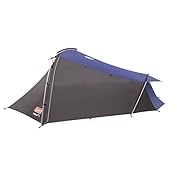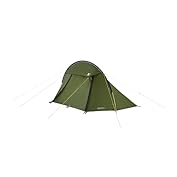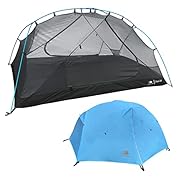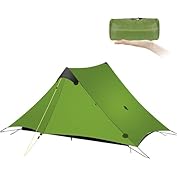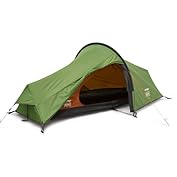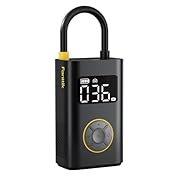Bikepacking is self-supported, multi day cycling excursions, with the rider carrying all the equipment they need on their bike. It often involves camping too. Many bikepacking routes take in some remote areas so you need to be prepared for any bike issues you may encounter and be as self sufficent as possible. When bikepacking a mechanical problem can turn a ride into a miserable experience. A well thought out repair kit can turn the bad experience around.
Route Planning
If you are going on an organised trip route planning may already have been done for you and you may be supplied with printed routes or maybe GPX files to load onto Garmin or Wahoo cycle computers.
If you are planning your own trip then preparation is essential. There are a number of different apps / websites you can use to plan routes such as
Strava (requires subscription)
These will give you mileage and elevation and may in some cases suggest routes. Be realistic in your own ability. You may be able to ride 50 miles in a day but can you do it day after day on a heavily loaded bike ? After drawing your route you can then export as a GPX to load into your cycle computer.
Its important to be realistic when planning a route. Remember you will be riding with luggage so its a good idea to reduce the daily distance that you would normally cover especially on hilly routes. Pre planned routes such as Way of the Roses or the Trans Pennine trail may not need extensive route planning as these are often well signposted.
Obviously if touring on an e-bike you need to take into account the range of your bike. This will be less on hillier routes and with luggage. You may have to plan cafe stops where you can give your battery a top up. Many cafes will allow this if eating there but its always a good idea to check first.
Training
Unless you are doing a short easy trip, some training is necessary. There is no substitute for miles in the legs. Mix your training by doing longer distance rides and more hilly shorter rides. Try riding the bike when loaded to get use to the change in handling and the weight. Unless you can guarantee the weather, train in all conditions. Its also good for checking saddle comfort!
The Bike
Unless you are on an organised trip where your luggage is transported between overnight stops you will need to carry everything you need on your bike so you will need a pannier rack unless you are using bike packing bags. Ensure the gearing is suitable for the trip. A heavily loaded bike may require lower gearing on hillier routes. Make sure your bike is suitable for the terrain. Routes with off road sections may require a gravel bike or mountain bike.
Cycle Luggage and Packing
The golden rule on bike touring / bike packing trips is to pack light. Even so you will need bike luggage. Traditionally bike tourers have used rear panniers, front panniers, saddle bag and maybe an handlebar bag. The huge increase in the popularity of bike packing has led to the availability of other types of luggage such as frame bags, saddle packs, top tube bags, stem packs etc.
The golden rule is to pack lightly and take only what you actually need. The more you pack the harder you need to pedal which also means burning more calories. If you are on an e-bike the heavier the bike the less range you will get out of a battery. Think carefully about what to take, repack food from from glass and metal into plastic containers.
Make sure you evenly distribute the weight you carry, bikes can be harder to handle if not packed properly. Try to avoid storing heavy items in an handlebar bag as it can make handling difficult.
Make sure your stuff can’t get wet by using dry bags or polythene bags inside panniers etc or using a waterproof handlebar bag. Avoid backpacks other than ones for hydration. After an hour so they can be very uncomfortable and also make your back sweaty.
Essential Tools
Multitool – A good quality cycling multitool with hex keys, screwdrivers, and a chain tool. Make sure yours has the correct sizes of Allen and Torx keys to fit your parts that might need adjustment or repair.
Tyre Levers – For removing tyres when fixing punctures. Our personal favourite is the Park Tool tyre lever.
Spare Tubes or Puncture Repair Kit – In case of punctures. Bring at least one spare inner tube even if you use a tubeless setup. If you are running tubeless take spare tyre plugs. See here for puncture repair kits.
Mini Pump or CO₂ Inflator – For reinflating tires. A mini pump is more reliable for long trips. Electric pumps that sometime double as power banks are becoming more popular.
Chain Lube & Rag – Keeps your drivetrain running smoothly.
Spare Chain Quick Links – Useful if your chain breaks. Make sure these are suitable for your chain.
Small Adjustable Spanner – If your bike has bolts that a multitool can’t handle.
Zip Ties & Duct Tape – Quick fixes for gear and bike repairs. Gorillia tape is excellent.
Spare Spokes & Spoke Spanner – A broken spoke can end your trip.
Brake Pads – Take a spare set of brake pads especially if your trip has alot of decents.
Derailleur Hanger – These are designed to bend to save your derailleur Take a spare but make sure its the correct one. There are dozens of different hangers.
Electrical Tape – Handy for securing cables and temporary repairs.
Optional but Useful
Leatherman with pliers – There are numerous occasions when you might need pliers while out riding. ie to remove thorns, remove a stuck tyre valve etc.
Small First Aid Kit – containing plasters etc.
Super Glue – Can fix small gear failures.
Spare Cleat Bolts – For clipless pedals.
Small Power Bank – For recharging GPS, lights, or phones.
Must-have bikepacking gear
Bikepacking bags – These are generally lighter and less rigid than panniers and racks. The are designed to fit various parts of your bike such as seat bags and saddle packs, handlebar bags,
frame and fork bags. Its recommended to have at least one drybag for keeping all your electronic equipment dry.
A cycle lock – this is essential for cafe / meal stops, parking up to explore, or for overnight storage.
Bikepacking clothing
Being comfortable is essential on long trips. Specialist cycling clothing is a must. Lightweight base
layers will keep you cool and wick sweat away but will keep the heat in when its cooler temperatures. Layering enables you to add / remove layers if too warm or too cold. Look at breathable clothing for outer layers and wet weather gear. Make sure you dont wear new cycling gear for the first time on a trip. Try it on a shorter and ensure its comfortable.
Take a spare pair of gloves in case one pair get wet. Overshoes are great for keeping shoes dry.
Bikepacking Checklist
If planning on a bikepacking adventure a checklist is useful and organising this into groups can be a good way to remember everything. Not all will be applicable if staying in B&B’s, hostels, hotels etc.
Bike
Bike
Helmet
Bikepacking bags
Front light
Rear light
Lightweight lock
Bike Repair Items
Lubricant
Spare spokes
Spoke spanner
Brake cables and derailleur cables
Spare tubes
Patch kit
Compact pump or C02 inflator with cartridges
Tyre levers
Cycling multi-tool
Replacement chain links
Chain tool
6” adjustable spanner
Assorted nuts and bolts
General-purpose multi-tool
Duct tape
Zip ties
Camping
Tent, tarp, bivy or hammock,sleeping bag, pillow and pad
Cooking System. Stove, fuel, mini lighter, waterproof matches, mug or pot, dish, plate
Water filtration system, purification drops or tablets, water reservoir or bottles with cages
Navigation System
Map, compass, route guide, permits, phone, solar/portable charger, GPS, personal locator beacon such as the Garmin Inreach.
Clothes
Wicking jersey or top, padded shorts or tights, sports bra, socks, biking shoes, rain jacket, weatherproof gloves, stowaway wind jacket, insulation layers (for cold conditions), neck gaiter/bandana/skullcap, arm/leg warmers. Puffy insulated jacket for night time.
Underwear
Warm hat
Long underwear top
Long underwear bottoms
Wool or synthetic socks
Hygiene & Toiletries
Toothpaste
Small toothbrush
Soap
Toilet paper
Zip-top bags various sizes for waste, food, etc.
Sunscreen
Lip balm
Hand sanitizer
Pre-moistened wipes
Sanitation trowel
Prescription medications
Chamois cream
First Aid Supplies
Blister pads
Gauze pads
Plasters
Bandages
Antiseptic cream
Pain-relief pills
Splint
Medical information/emergency contact card
Miscellaneous
Meals and snacks
Headlamp (with fresh batteries)
Extra batteries
Sunglasses
Camera
Watch
Pen or pencil
Cash/credit card/ID/passport
5 Of The Best Bikepacking Routes in the UK
1) King Alfred’s Way
King Alfred’s Way is a 217-mile loop that begins in Winchester in the south of England, goes through the Surrey Hills, South Downs Way, Salisbury Fields, and the Ridgeway.
2) Pennine Bridleway
205-mile-long Pennine Bridleway runs through the Pennines from Derbyshire to Cumbria, travelling through the Peak District, South Pennines, and Yorkshire Dales.
3) West Kernow Way
The 167-mile route is a figure of eight around the edges of Cornwall, beginning in Penzance, heading northwest around Sennen, Land’s End, St Just and Cape Cornwall, then curving round to Porthleven on the south coast. It then heads into the Lizard Peninsula before heading north, round Helford Estuary, and back down to Penzance.
4) Trans Cambrian Way
This 108-mile adventure can be tackled in two days. The route begins at Knighton on the Welsh border and ends at Dyfi Junction on the Irish Sea.
5) Traws Eryri (Trans Snowdonia)
Traws Eryri crosses the entirety of Eryri (Snowdonia) National Park, from the southern limit of the park at Machynlleth, to the north coast of Wales at Cowy. It covers 144 miles.


